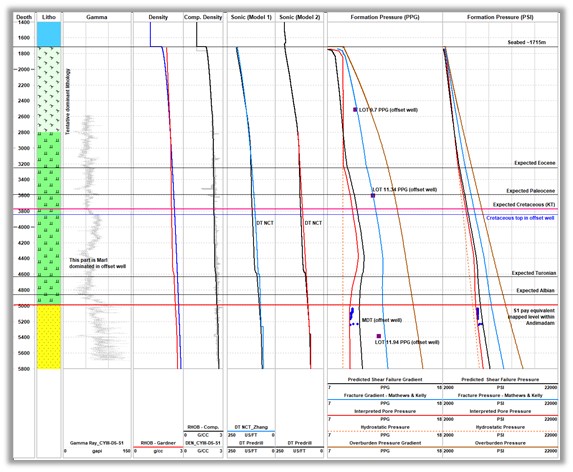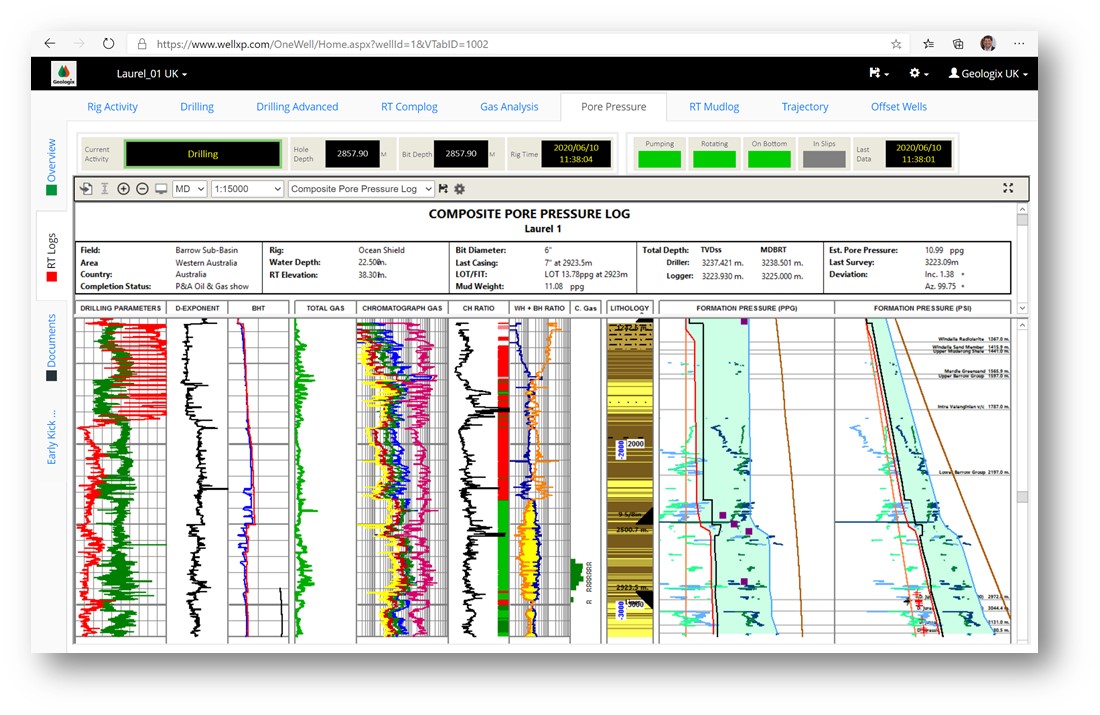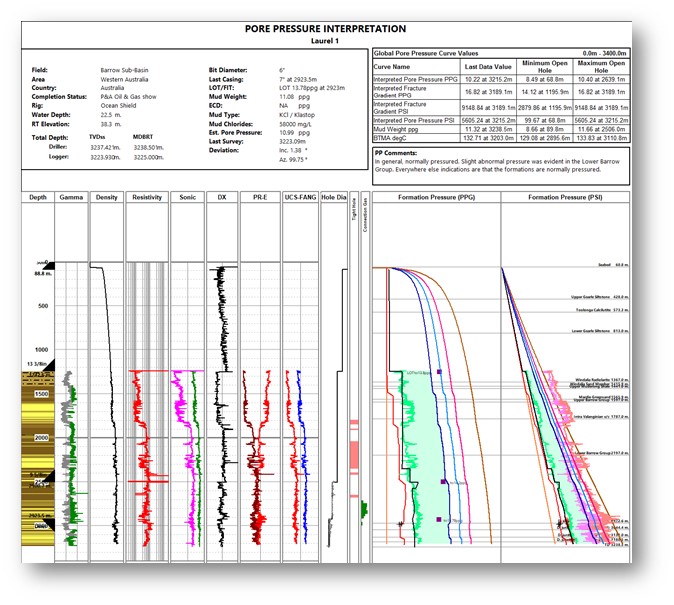Presented by:

This article appears in the E&P newsletter. Subscribe to the E&P newsletter here.
Geologix’s GEOPressure services are designed to help users remotely model and monitor pore pressure and 1D geomechanical parameters across the life cycle of a well from planning through drilling, field development and well decommissioning. Geologix’s integrated services also provide the necessary software platforms and applications for analysis and real-time collaboration for immediate decision-making.
Reliable pore pressure forecasting, real-time PPFG monitoring and geomechanics insights are delivered through the Geologix cloud system—ready for any well project—from conventional hydrocarbon wells to new-generation energy such as geothermal, carbon capture and storage, and end-of-life abandonments.

The pre-drill workflow involves the analysis of detailed offset wells, as well as regional geological understanding, to estimate a fitting predicted overburden/pore pressure/fracture gradient profile across stratigraphy by employing the seismic velocity of the proposed location.
Output data include overburden gradient and vertical stress magnitude; a pore pressure profile interpreted from a range of input data; fracture gradient and minimum horizontal stress (SHMIN); and a pre-drill mud window.
Insights based on data availability are also provided, including:
- Collapse pressure/shear failure pressure by Mohr Coulomb rock failure criterion;
- Constrain maximum horizontal stress (SHMax) magnitude by a range of methods;
- Velocity-based rock strength and dynamic elastic properties;
- 1D mechanical earth model (MEM) derived from seismic velocity; and
- Interpret stress regime based on regional principal in-situ stress distribution.
During drilling, a web-based dashboard is provided to monitor the progress of the well using real-time data streamed from the rig into the WellXP cloud server. The dashboard can be viewed on any device from anywhere at any time, enabling real-time collaboration between the well site and remote GEOPressure advisers.

In the background, analysts and subject matter experts interpret the data to provide meaningful and timely pore pressure and fracture gradient profiles by integrating mudlogging, LWD and drilling parameters on the go by using normal compaction trend (NCT)-based approaches. A continuous update on the pre-drill model provides critical insights on subsurface pressure behavior. The workflow pays special attention to various well events (connection gas, influx, loss, caving information, etc.) to provide confident and calibrated drilling mud windows and advice on casing landing and mud weight corrections while drilling. At the end of every section total depth, real-time models are periodically updated with available wireline logs to reduce further uncertainties.
Users are provided with data including overburden gradient and vertical stress magnitude; a pore pressure profile interpreted from a range of input data; fracture gradient and minimum horizontal stress (SHMIN); timely mud weight recommendations; and advice on wellbore stability.
Post drilling, a comprehensive 1D geomechanical model is provided as a post-drill well analysis, which finalizes the subsurface pressure interpretations, calibrated with various downhole measurements.
Data provided include
- Overburden gradient and vertical stress magnitude;
- Pore pressure profile interpreted from a range of input data;
- Fracture gradient and minimum horizontal stress (SHMIN);
- Collapse pressure/shear failure pressure by Mohr Coulomb rock failure criterion;
- Constrain maximum horizontal stress (SHMax) magnitude by a range of methods;
- Log-based rock strength and dynamic elastic properties;
- 1D MEM;
- Interpret stress regime based on principal in-situ stress distribution;
- Horizontal stress orientations from wellbore failures and rose plot;
- Stress polygon and hoop stress analyses at any desired interval; and
- Estimate stress path for depleted reservoirs if encountered.

A detailed post-drill report is provided as well as the listed interpretations, and the lessons learned from real-time analyses and inferences on critical pore pressure limits to avoid shear slippage on randomly oriented faults. Suggestions are also provided for drilling optimization and delivery of a stable wellbore. All analyses become a digital asset that can be retained and modified throughout the timeline of the wells, increasing knowledge and deepening the ability to predict future operations.
The WELLPSiGHT software forms part of Geologix’s suite of software, GEO. GEOSuite provides a comprehensive well management system on all drilling operations, however challenging or complex the environment.
Recommended Reading
Lake Charles LNG Selects Technip Energies, KBR for Export Terminal
2024-09-20 - Lake Charles LNG has selected KTJV, the joint venture between Technip Energies and KBR, for the engineering, procurement, fabrication and construction of an LNG export terminal project on the Gulf Coast.
Entergy Picks Cresent Midstream to Develop $1B CCS for Gas-fired Power Plant
2024-09-20 - Crescent will work with SAMSUNG E&A and Honeywell on the project.
FERC Chair: DC Court ‘Erred’ by Vacating LNG Permits
2024-09-20 - Throwing out the permit for Williams’ operational REA project in the mid-Atlantic region was a mistake that could cost people “desperately” reliant on it, Chairman Willie Phillips said.
Diamondback to Sell $2.2B in Shares Held by Endeavor Stockholders
2024-09-20 - Diamondback Energy, which closed its $26 billion merger with Endeavor Energy Resources on Sept. 13, said the gross proceeds from the share’s sale will be approximately $2.2 billion.
Optimizing Direct Air Capture Similar to Recovering Spilled Wine
2024-09-20 - Direct air capture technologies are technically and financially challenging, but efforts are underway to change that.
Comments
Add new comment
This conversation is moderated according to Hart Energy community rules. Please read the rules before joining the discussion. If you’re experiencing any technical problems, please contact our customer care team.





